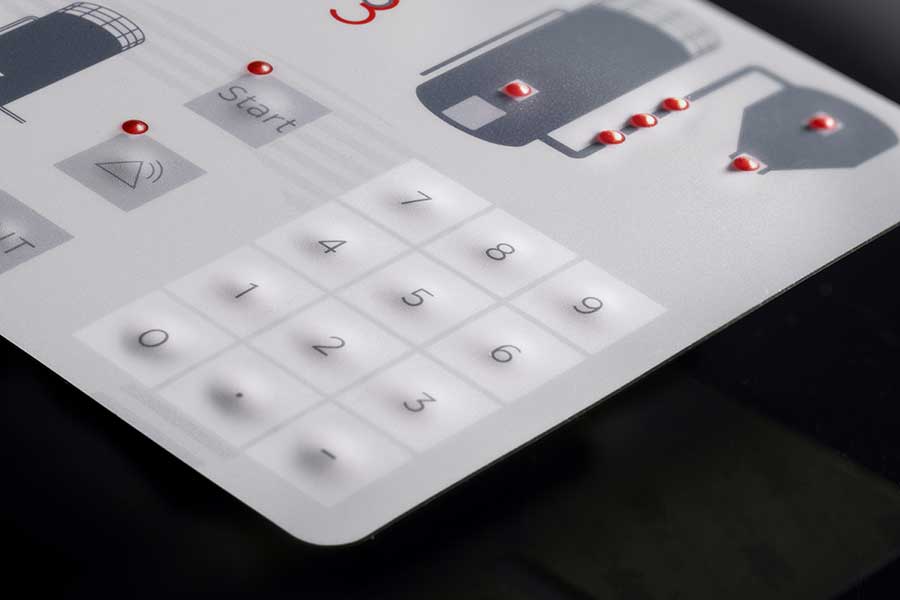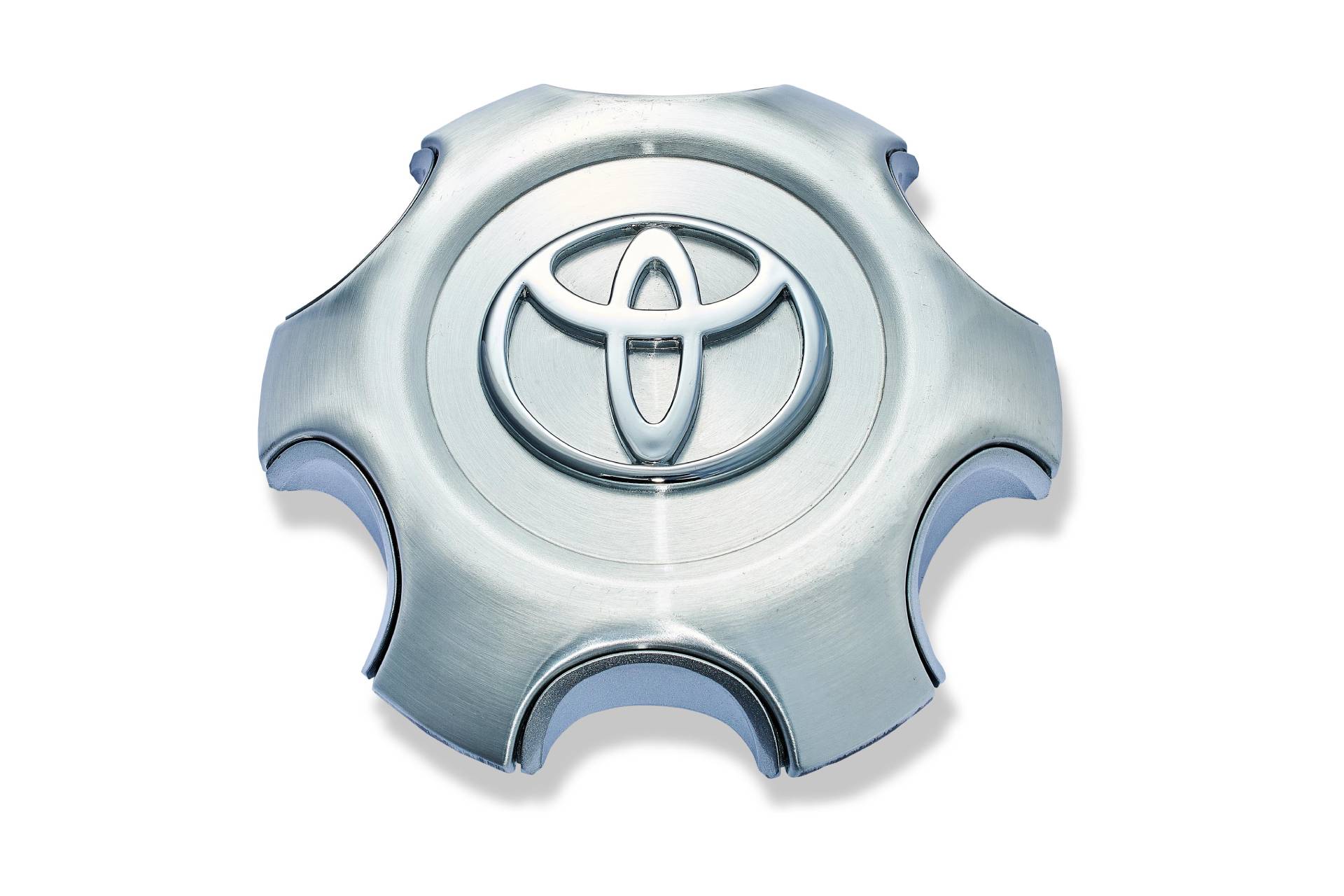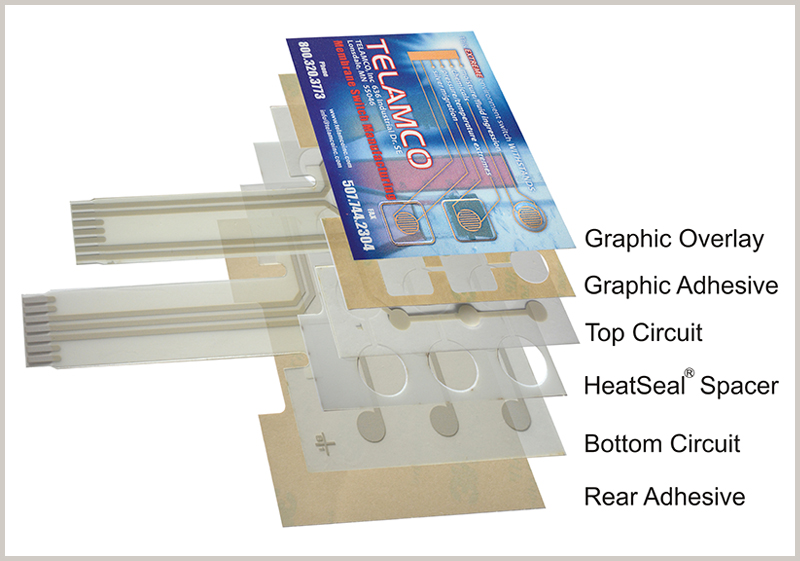Comprehending the Relevance of Membrane Switch in Modern Electronics and Their Applications
Membrane switches over act as a crucial element in contemporary electronics, supplying an efficient user interface for user interaction. Their lightweight and adjustable nature makes them ideal for a variety of applications throughout diverse industries. Understanding their key elements and benefits can provide insights right into their growing significance. As modern technology remains to advancement, the development of Membrane changes raises questions about their future applications and design advancements. What exists ahead in this dynamic field?

What Are Membrane Switches?
Membrane buttons are important parts in modern electronics, working as interface that assist in communication between individuals and devices. These switches include a number of layers, including a visuals overlay, an adhesive layer, and a circuit layer, every one of which interact to develop a long lasting and practical user interface. The layout permits for a flat, inconspicuous option that can be tailored regarding dimension, shape, and visual appearance, making them appropriate for numerous applications, from customer electronic devices to clinical gadgets. The tactile responses provided by Membrane switches over enhances customer experience, while their resistance to dust and moisture makes them suitable for challenging atmospheres. Membrane buttons can integrate features such as backlighting and printed graphics, better expanding their use. Their convenience and toughness make them a favored choice in sectors where integrity and ease of usage are extremely important, eventually adding to the smooth operation of contemporary electronic gadgets.
Trick Elements of Membrane Changes
While numerous parts contribute to the performance of a membrane button, three main layers play considerable roles in its layout and procedure. The leading layer, normally made from a sturdy polymer, functions as the interface for customer communication, frequently including printed graphics and symbols. Under this is the spacer layer, which maintains the necessary range in between the top layer and the circuit layer. This spacer layer assurances that the button activates just when pushed, protecting against unexpected inputs. The circuit layer contains conductive traces that finish the electric circuit when the leading layer is dispirited. These traces can be made from various products, including copper or silver. With each other, these parts produce a reliable and durable device that is portable and functional, appropriate for a vast range of digital applications, from family appliances to clinical tools. Recognizing these essential parts is crucial for valuing the overall capability of Membrane switches.
Benefits of Making Use Of Membrane Changes

Membrane Switch Production Refine
Recognizing the Membrane button production procedure reveals the elaborate actions associated with creating these important elements. The process typically starts with the layout stage, where layouts and specifications are developed using specialized software. Following this, the visuals overlay is printed on a flexible substrate, commonly using high-resolution printing methods to guarantee quality and precision.Next, the sticky layers are applied, which serve to bond the different components with each other. The circuit layers, made from conductive inks or materials, are after that published onto a separate substratum. These layers are carefully aligned and laminated to develop a functional switch.After assembly, the buttons go through checking to validate functionality and resilience. Quality assurance steps are implemented throughout the process to recognize and correct any defects. Ultimately, the completed Membrane switches are packaged and prepared for distribution, prepared to satisfy the needs of modern electronic applications.
Applications of Membrane Changes in Various Industries
Membrane buttons are increasingly used throughout various industries, specifically in clinical tools and consumer electronic devices. In the clinical area, they give trusted control user interfaces for devices that require accurate operation. In a similar way, in consumer electronics, these buttons boost individual communication by supplying responsive and smooth interfaces.
Medical Devices Control
Numerous contemporary clinical gadgets make use of Membrane buttons for streamlined procedure and improved individual interaction. These buttons offer a dependable, durable user interface for a range of applications, consisting of diagnostic devices, patient tracking systems, and surgical instruments. Their personalized designs permit specific designs that can fit the membrane switch manufacturer unique requirements of health care specialists, making certain intuitive navigating and effective accessibility to vital features. Additionally, Membrane switches are resistant to pollutants, making them suitable for sterilized settings. The tactile feedback they offer can boost user confidence, decreasing the danger of mistakes during crucial clinical procedures. Generally, the integration of Membrane switches in clinical tools significantly adds to boosted operational effectiveness and person safety in healthcare settings.
Customer Electronic Devices Interfaces
In the domain of consumer electronics, Membrane buttons play an essential function in boosting customer interfaces across a variety of tools. These buttons are essential to products such as push-button controls, microwaves, and pc gaming consoles, giving a easy to use and effective user interface. Their style permits for a smooth assimilation of graphics and capability, making it possible for manufacturers to create sleek, modern aesthetic appeals without jeopardizing functionality. Membrane switches are also known for their sturdiness, typically standing up to substantial usage and exposure to various environmental problems. In addition, they can include functions like backlighting and tactile feedback, further boosting the customer experience. As customer demands for sophisticated yet intuitive user interfaces expand, Membrane switches remain to be a crucial element in advancing electronic tool performance.
Design Considerations for Membrane Changes
Designing efficient Membrane switches over requires cautious focus to various elements that influence both capability and customer experience. One vital factor to consider is the selection of products, as they can affect resilience, responsive comments, and aesthetic allure. Choosing a suitable adhesive is essential for ensuring long-term attachment and resistance to environmental factors.In enhancement, the design and layout of the switch must fit user communication, with button dimensions and spacing optimized for simplicity of use. The consolidation of graphics and labeling should focus on clarity and exposure under various illumination conditions.Consideration of electric qualities, such as actuation pressure and switch level of sensitivity, will certainly improve the responsiveness of the Membrane switch. Additionally, the design must accommodate producing procedures to guarantee cost-effectiveness and timely manufacturing. On the whole, a well-thought-out style boosts both the customer and the functionality experience of Membrane switches in modern-day electronic devices.

Future Patterns in Membrane Switch Modern Technology
As modern technology proceeds to evolve, Membrane switches are poised to integrate new improvements that will certainly boost their capability and application in numerous areas. One substantial fad is the unification of long lasting and versatile products, which will boost the life expectancy and dependability of these switches. Improved surface textures and customizable graphics are also anticipated, permitting even more instinctive customer interfaces.Moreover, the assimilation of wise innovation, such as touch-sensitive surfaces and haptic feedback, is anticipated to boost individual interaction, making Membrane switches over extra receptive and appealing. In addition, developments in printed electronics will certainly make it possible for a lot more complex circuitry within thinner accounts, even more expanding layout possibilities.Sustainability will certainly also play a vital duty in future advancements, as producers explore eco-friendly products and production procedures. Generally, recommended you read these trends will certainly ensure that Membrane changes remain indispensable and pertinent in an interconnected and increasingly electronic globe.
Regularly Asked Concerns
Exactly How Do Membrane Changes Compare to Standard Mechanical Switches?
Membrane switches offer benefits over conventional mechanical buttons, including minimized size, lighter weight, and enhanced resilience. They typically supply a secured surface, boosting resistance to dust and wetness, making them excellent for diverse discover this info here applications.
What Products Are Commonly Utilized in Membrane Switch Building?

Can Membrane Switches Withstand Extreme Environmental Issues?
Membrane switches can hold up against extreme ecological conditions, depending upon their design and materials. High-quality buildings usually feature toughness against temperature variations, moisture, and exposure to chemicals, making them ideal for various demanding applications throughout sectors.
For How Long Do Membrane Switches Over Generally Last Prior To Failing?
Membrane switches usually show a lifespan ranging from 1 to 10 million actuations, depending upon variables such as use frequency, environmental conditions, and producing high quality. Normal upkeep can extend their resilience and operational integrity substantially.
Are Membrane Switches Over Customizable for Specific Applications?
Membrane switches are certainly adjustable for particular applications. They can be tailored in style, performance, and size, allowing manufacturers to meet unique customer needs and boost item appearances while keeping functional effectiveness and resilience. Membrane buttons are crucial elements in contemporary electronics, offering as customer interfaces that assist in interaction between devices and users. The responsive comments offered by Membrane changes improves user experience, while their resistance to dirt and wetness makes them perfect for testing atmospheres. The consolidation of graphics and labeling should focus on clearness and visibility under numerous lighting conditions.Consideration of electric attributes, such as actuation force and button sensitivity, will improve the responsiveness of the Membrane button. Boosted surface area appearances and customizable graphics are likewise anticipated, allowing for even more intuitive user interfaces.Moreover, the combination of smart modern technology, such as touch-sensitive surfaces and haptic responses, is expected to boost user communication, making Membrane changes more appealing and receptive. Membrane changes deal advantages over standard mechanical switches, including lowered size, lighter weight, and enhanced resilience.